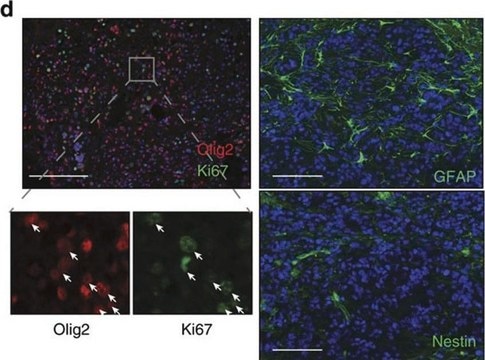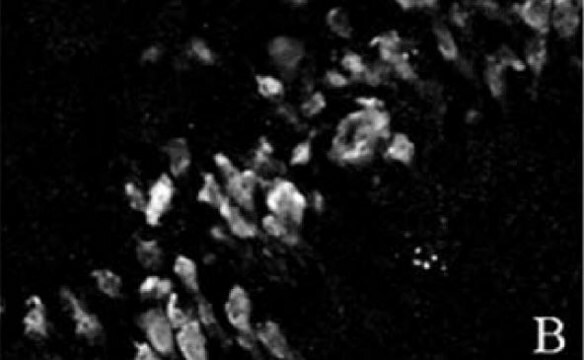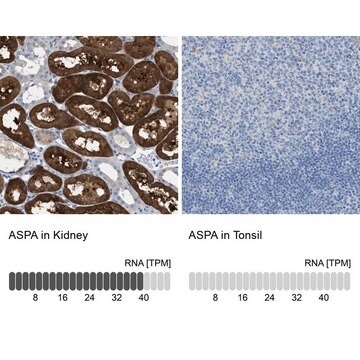ABN1698
Anti-Aspa/Nur7 Antibody
from rabbit, purified by affinity chromatography
Synonim(y):
Aspartoacylase, Aminoacylase-2, ACY-2, Aspa/Nur7, Anti-Aspartoacylase
About This Item
Polecane produkty
pochodzenie biologiczne
rabbit
Poziom jakości
forma przeciwciała
purified antibody
rodzaj przeciwciała
primary antibodies
klon
polyclonal
oczyszczone przez
affinity chromatography
reaktywność gatunkowa
human, mouse, rat
metody
immunohistochemistry: suitable
western blot: suitable
numer dostępu NCBI
numer dostępu UniProt
Warunki transportu
wet ice
docelowa modyfikacja potranslacyjna
unmodified
informacje o genach
human ... ASPA(443)
Opis ogólny
Immunogen
Zastosowanie
Western Blotting Analysis: A representative lot detected Aspa/Nur7 in the cytosol, but not myelin, fraction from rat brain tissue homogenate (Madhavarao, C.N., et al. (2004). J Comp Neurol. 472(3):318-329).
Immunohistochemistry Analysis: A representative lot detected Aspa/Nur7 expression pattern in various regions of rat forebrain, including corpus callosum, cerebral cortex, hippocampal commissure (hc), fimbria, and anterior commissure (Madhavarao, C.N., et al. (2004). J Comp Neurol. 472(3):318-329).
Immunohistochemistry Analysis: A representative lot detected similar Aspa/Nur7 expression pattern as CC1 in various regions of rat forebrain, including the Purkinjie & axonal fiber layers of cerebellum, corpus callosum, as well as layer 2 of primary somatosensory cortex (Madhavarao, C.N., et al. (2004). J Comp Neurol. 472(3):318-329).
Neuroscience
Developmental Signaling
Jakość
Western Blotting Analysis: 1.0 µg/mL of this antibody detected Aspa/Nur7 in 10 µg of rat brain tissue lysate.
Opis wartości docelowych
Postać fizyczna
Przechowywanie i stabilność
Inne uwagi
Oświadczenie o zrzeczeniu się odpowiedzialności
Nie możesz znaleźć właściwego produktu?
Wypróbuj nasz Narzędzie selektora produktów.
Kod klasy składowania
12 - Non Combustible Liquids
Klasa zagrożenia wodnego (WGK)
WGK 1
Temperatura zapłonu (°F)
Not applicable
Temperatura zapłonu (°C)
Not applicable
Certyfikaty analizy (CoA)
Poszukaj Certyfikaty analizy (CoA), wpisując numer partii/serii produktów. Numery serii i partii można znaleźć na etykiecie produktu po słowach „seria” lub „partia”.
Masz już ten produkt?
Dokumenty związane z niedawno zakupionymi produktami zostały zamieszczone w Bibliotece dokumentów.
Nasz zespół naukowców ma doświadczenie we wszystkich obszarach badań, w tym w naukach przyrodniczych, materiałoznawstwie, syntezie chemicznej, chromatografii, analityce i wielu innych dziedzinach.
Skontaktuj się z zespołem ds. pomocy technicznej







